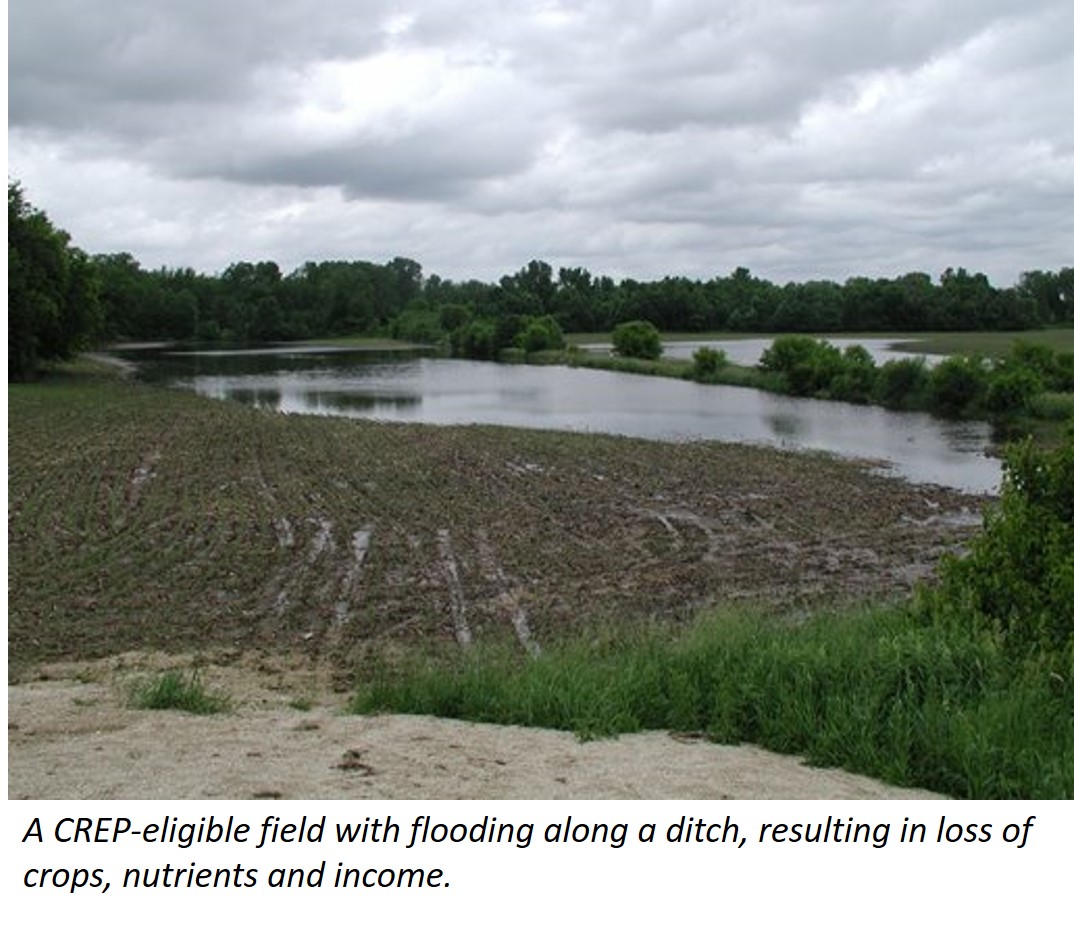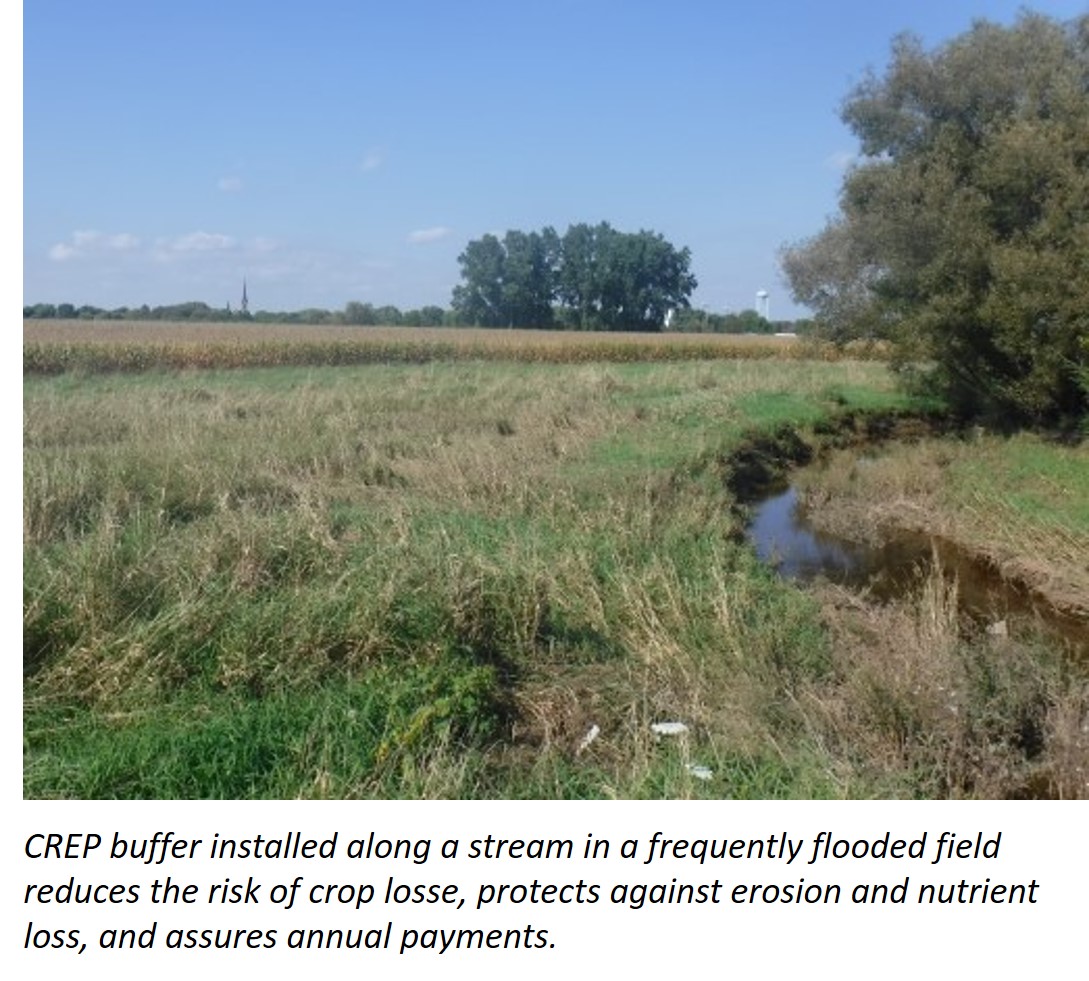Release Date: June 25, 2019
Contact: Donna Gilson, Communication Specialist, (608) 224-5130
Download PDF
Editors note: High-resolution versions of the photos below are available on our Flickr site.
 MADISON – Enrollment in Wisconsin’s CREP program is open once again, after an eight-month hiatus, and just in time for farmers looking at fields that may be too wet for planting anytime in the near future.
MADISON – Enrollment in Wisconsin’s CREP program is open once again, after an eight-month hiatus, and just in time for farmers looking at fields that may be too wet for planting anytime in the near future.
“If you have low or wet parts of your fields next to ditches, streams, lakes or wetlands, you need to consider CREP,” says Brian Loeffelholz, who coordinates CREP for the Wisconsin Department of Agriculture, Trade and Consumer Protection. “You don’t have to take whole fields out of production or pasture – just the area needed to solve the concern. Instead of getting only a decent yield every few years, you can have a guaranteed income off that land every year.”
CREP is the Conservation Reserve Enhancement Program, one component of the federal Conservation Reserve Program, or CRP. Enrollment in the program was suspended last Oct. 1 when the federal fiscal year ended without a new farm bill. Congress and the President enacted a new Farm Bill in in December 2018, and it took a few months for the USDA to get the new provisions in order. Enrollment reopened June 3.
CREP offers both state and federal incentives to landowners who install conservation practices along waterways. There is no minimum acreage, and adjacent land can remain in production. Landowners can enroll under a 15-year contract, or a perpetual easement. In return for payments, landowners plant grass filter strips or tree and shrub buffers between water and farmland, install grass waterways, or restore wetlands. These practices stop water and allow it to seep into the soil and subsoil, reducing nutrient runoff and flood damage to farmland.
 Participants receive at least three types of payments:
Participants receive at least three types of payments:
- Annual payments – For crop land, these range from $95 to $300 an acre and average about $200. For pasture land, they are $45 to $80 an acre, averaging about $60.
- One-time incentives – Based on the annual rental rate for the enrolled land, incentives average $250 an acre for 15-year contracts and $2,000 for perpetual easements.
- Practice payments – CREP covers at least 70 percent of the cost of installing conservation practices.
Land in 54 of Wisconsin’s counties is eligible for CREP. Land must have been in crop production or pasture at least four years between 2012 and 2017.
For more information, visit our CREP pages, or contact your local USDA Farm Service Agency office.
###
Find more DATCP news in our newsroom, and on Facebook, Twitter and Instagram.